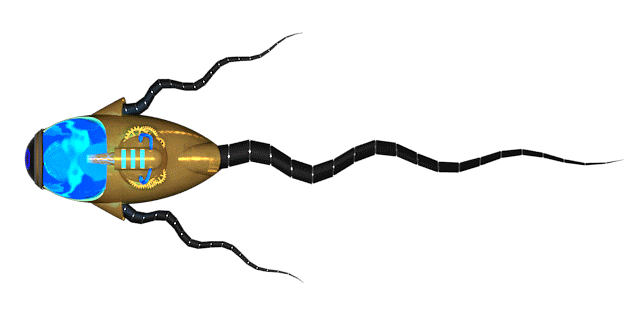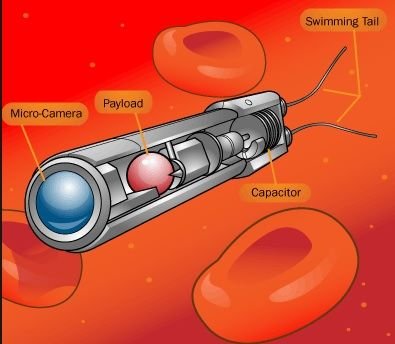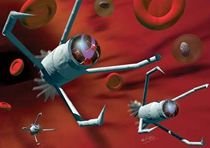What are Nanobots?
Nanobots are nanoscopic robots or what is the same thing, a robot about the size of an atom. Nanotechnology studies the matter from a level of nanometric resolution. 1 nanometer (unit of length) corresponds to one billionth of a meter. We must know that an atom is less than 1 nanometer, so we say that the size of a nanobot should be similar to that of an atom. Nano means dwarf and is still smaller than micro.

The study of nanobots is within the science of nanorobotics or nanotechnology and can also be called nanobots, monoids, nanites, nano agents, nanorobots or nanomachines.
Future or Reality The Problem of the Nanobots
If we talk about the future, imagine that you go to the doctor to receive treatment for a persistent fever. Instead of giving you a pill or an injection, the doctor sends you to a special medical team that implants a small robot in your bloodstream. The robot detects the cause of the fever, travels to the appropriate system and provides a dose of the medication directly to the infected area. Future or reality? For the future.
The biggest problem right now is to provide the nanobots with autonomous movement and a navigation system.
Some designs using the patient's own body as a way to generate energy for the nanobots using the bloodstream or the heat of the human body.
As far as the movement is being investigated, they are given cilia (limbs in the shape of hairs) that vibrate. Most researchers look at microorganisms (such as bacteria) to try to provide nanobots with movement. There are even some who use a simple propeller.
To guide the nanobots, magnetic fields external to the human body are being used.

What are Nanobots Used for?
They can be used to travel inside the human body to fight some diseases or repair organs, but can also perform other functions, such as cleaning the environment, detecting pests or clearing an oil spill.
Although it is a field in which there is a long way to go, the use of nanobots for the cure of diseases, and specifical cancer is one of the most hopeful fields for the medicine of the future.
Researchers from the Institute of Technology of Israel (Technion) and the Federal Polytechnic School of Zurich, would have created nanobots made of polymers and magnetic nanowires, capable of being introduced into the human bloodstream and remote-controlled inside to detect cancer cells and release drugs over them.

All this is still in the experimentation phase and has not yet been tested in humans, perhaps there will still be a few years until we can make real use of nanobots in medicine, although in recent years there has been enormous progress in many of the necessary fields to create this technology.
Another user of the nanobots is for water treatment or cleaning the environment. You could send hundreds, thousands, millions of these devices and have them swim through the water to see if it is contaminated, catalyze pollutants, and then collect them.
Types of NanoBots
The two basic types of nanobots are assemblers and self-replicating or self-replicating.
- Assemblers are nanobots in the form of simple cells that may be able to decipher molecules or atoms of different types, and controlled by specific programs. By their use, they are also called molecular assemblers, as a reference to a structure that exists inside every cell of every living being called the ribosome which is the natural "assemblers".
- Self-replicants are essentially nanobots capable of duplicating (self-replicating) themselves at high speed. This type of duplication helps the construction of large-scale applications or deployment of nanobots for large-scale tasks.

In military research, self-replicators can be used as a body armor for the military and capable of self-repair in case of damage.
These nanorobots can also be a threat according to scientists. The "gray plague" is a threat from an army of self-replicating nanorobots out of control destroying the planet.
As early as 1959 the theoretical physicist Richard Feynman (winner of the Nobel Prize in Physics in 1965) predicted that one day it would be possible to build such tiny machines that they would be made up of only a few thousand atoms.
Later in the 1987 novel, "Engines of Creation," Eric Drexler describes nanobots capable of destroying cancer cells, collecting free radicals or repairing the damage suffered in cellular tissues.
From here, the nanorobots began to be studied and researched and at this moment it promises to be the next step in the evolution of human technique. A revolution that simply will not go unnoticed in the coming years, but that is not yet final.
Genetics, biochemistry, physics, engineering, and materials are the pillars for the creation and development of nanotechnology.